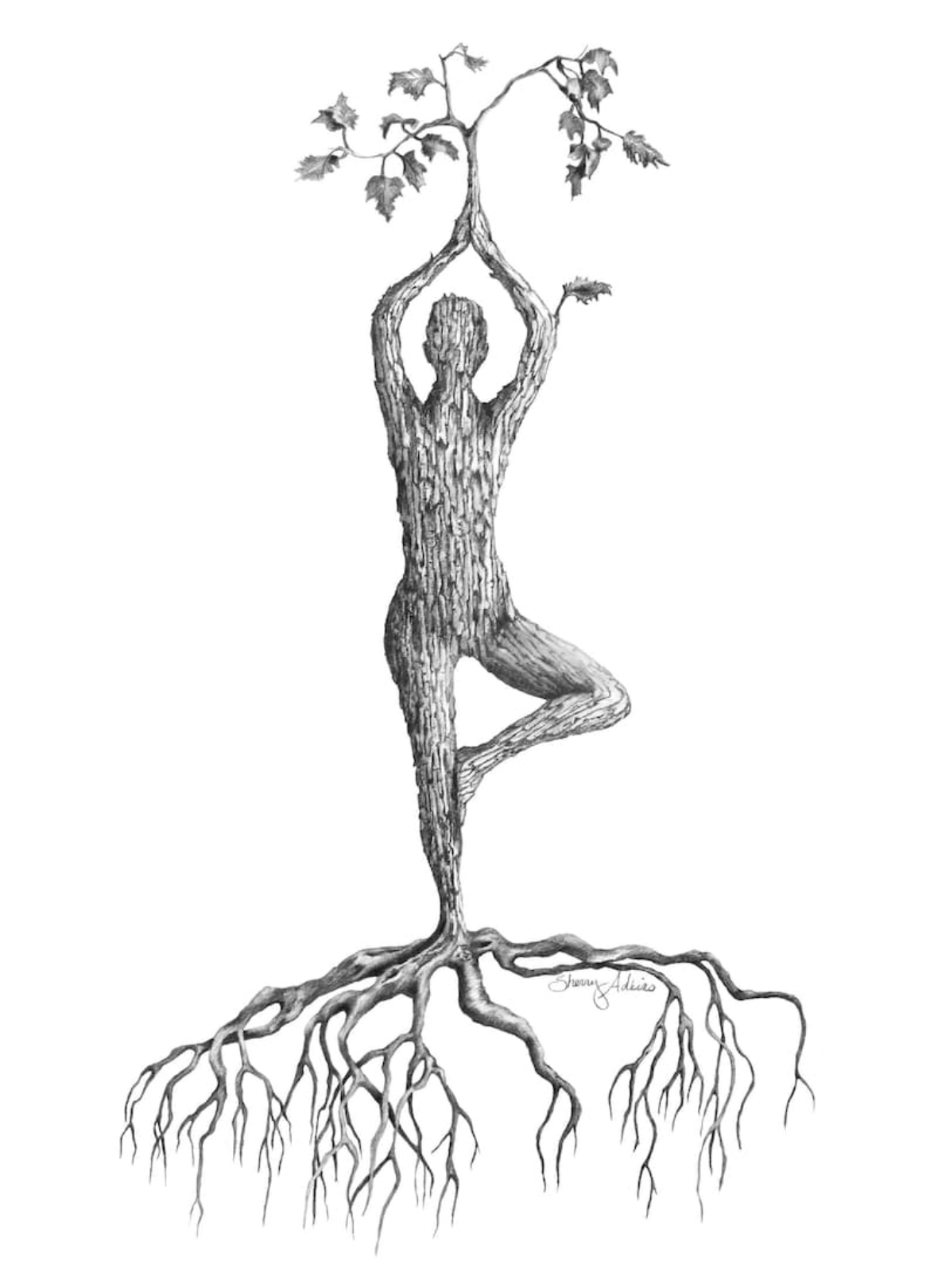In Western countries yoga is increasingly practiced lacking the context which serves to enhance a myriad of life enhancing health benefits. Hatha yoga often thought of as the physical component of yoga, includes breathing practices, relaxation, and meditation. These features are indispensable for people suffering from inflammation to due arthritis.
As certain medical communities question whether yoga is appropriate for people with vulnerable joints, studies at John’s Hopkins University provided critical evidence showing that patients with arthritis advocate yoga as safe, feasible, and enjoyable. Focusing on rheumatoid arthritis, (RA) osteoarthritis, (OA) and metabolic arthritis known as gout, participants in the study practiced specifically designed classes that used yoga’s gentle approach based on concerns for the individual. Blocks, straps, blankets, and chairs were used to allow for gradual progression. The potential benefits of yogic breathing, meditation, and mindfulness were incorporated. The participants continued their medications during the study.
For people living with a chronic inflammatory disease, physical activity is an essential part of the treatment. According to the Arthritis Foundation, OA, RA, and gout have additional guidelines. In fact, stress management and diet play significant roles in promoting joint health. Meditating and a diet conducive to balancing intestinal flora are equally important.
A healthy immune system generates inflammation to clear infections and heal injuries, however; the overactive immune system does the opposite. Systemic inflammation attacks healthy tissue such as joints in the spine, hands and feet. Other factors that contribute to inflammation related arthritis are:
- Antibiotics. Antibiotics can be life saving, but prolonged use has been linked to increased risk of developing inflammatory disorders related to alterations in the intestinal microbiota.
- Food. Red meat, sugar, hydrolyzed fats, sodas, fast foods and processed foods with preservatives and other chemicals provoke an inflammatory response.
- Weight. Obesity-related inflammation has been correlated with neurodegenerative disorders like Alzheimer’s disease.
- Stress and trauma. Life stressors and trauma exact a cost not only on physical and mental health, but also to an uncontrolled inflammatory immune response.
Rheumatoid Arthritis
RA is the most common form of autoimmune arthritis. The cause is not known in every person, but viral exposure, stress or smoking, can trigger it in people who are genetically predisposed. A recent journal analysis highlighted the complex and vital role of microbiomes (gut microbes) in immune-related diseases like RA. Other factors are poor diet, antibiotic treatment, deregulated immune response, and stress.
Osteoarthritis
OA is the most common type of arthritis and can damage almost any joint in the body. It was once considered the “wear-and-tear” disease referring to cartilage on the ends of bones wearing down after years of use. Doctors now know that OA is a disease of the whole joint, not just cartilage. Bones in affected joints become weaker, the connective tissue that holds the joint together deteriorates and inflammation damages the joint lining. Contrary to decades of belief, inflammation plays a key role in OA. Other subtypes of OA include:
- Post traumatic injuries such as torn ligaments in the knee or bone fractures.
- Repetitive stress syndrome from physically demanding use of joints on the job.
Metabolic Arthritis (Gout)
Gout results from a buildup of uric acid in the body. Its crystals are a byproduct of purines also found in foods including red meat, some seafoods, and alcohol. When the body cannot get rid of excess uric acid, it accumulates in joints causing sudden and intense pain often in the big toe. Some research suggests in addition to uric acid triggering gout, damage from OA and disruptions in the microbiome may be factors. Drugs treating gout can effect kidney and liver function, so patients are encouraged to adopt a mostly plant-based, low-purine diet.
The Mediterranean Diet
Due yoga’s meditative nature its combined positive effects also lead to a more mindful diet. What you eat can have a positive or negative impact on arthritic symptoms. The Mediterranean diet credited with anti-inflammatory qualities, emphasizes locally grown fruits and vegetables, olive oil, and nuts. Whole grains, some fish, yogurt, and occasionally, red wine is favorable. The disease-fighting power of the Mediterranean diet also focuses on the antioxidant, anti-inflammatory, and antiviral properties of flavonoids found primarily in berries. Using herbs for flavoring instead of salt is prescribed for people with RA who may feel the effects of salt more adversely, says, Michelle Babb, a Seattle-based nutrition educator.
Slowing the Disease Progression
Yoga is a meaningful alternative to other forms of exercise with extra benefits. Mitigating the stress that results from pain and disability, yoga increases mindfulness and general wellbeing. Although there is no cure for arthritis and the best medical care can only help so much, there is a great need to take control of its overall impact. As evidence suggests, gentle yoga, following a Mediterranean diet and protecting essential microbiome can slow the progression of arthritis.
Published: Yoga+Life Magazine





